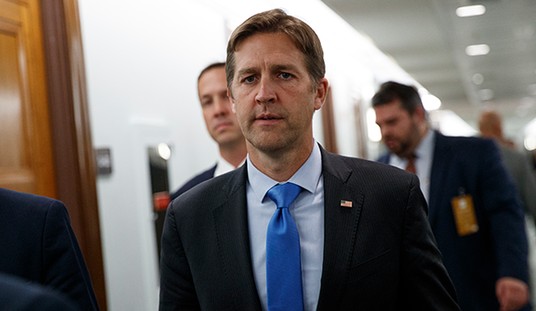The political class and the corporate media are all up in arms today about the COVID-19 relief bill’s status. The nearly 6,000-page monstrosity is actually a COVID-19 relief bill, a Continuing Resolution, and the National Defense Authorization Act all rolled into one. President Trump’s signature would pass all three in what essentially is an end-run around a proper budget process amid emotional blackmail to get it done.
Now the president is standing his ground, pointing out the flaws in the process and some of the truly ridiculous spending included in the full package. Yes, he is holding up the portion that would extend enhanced unemployment. But he is also shining a bright light on how broken Congress is and how many truly ridiculous programs we support overseas. Because so many Americans were invested in the relief package, more eyeballs are on the process than would normally be there.
— Donald J. Trump (@realDonaldTrump) December 23, 2020
This is simply another example of President Trump ensuring that our political elites’ behavior blows up in their faces. How many Americans are going to be thrilled to know we spend millions on gender programs in Pakistan? Or $200,000 to promote gender equity in police departments in Costa Rica? Tying all these bills together in a single package exposes the absurdity of how U.S. taxpayer dollars are spent. Even worse, it shows the extent to which we now borrow or recklessly print money to pay for the programs.
Americans would benefit from knowing that this money rarely goes directly to the people in these countries. Instead, it supports a raft of left-wing NGOs and not-for-profit organizations funded directly by Congress. There is almost no way to audit the spending or demonstrate effectiveness independently. As the Huffington Post reported in 2014:
Since 1992, the U.S. has sent $3 billion to $5 billion in aid to Ukraine, with only cursory public disclosure. The U.S. State Department operates an online database, ForeignAssistance.gov, but names of foreign recipients are often left out, and entire sections are blank. Furthermore, the disclosure often comes long after the money has been distributed.
“It is incredibly hard to find this kind of information,” Nicole Valentinuzzi, communications manager for Publish What You Fund, an international organization promoting transparency for foreign aid.
The main channels of U.S. aid are the State Department; the U.S. Agency for International Department; the National Endowment for Democracy, a nonprofit entity funded through direct appropriations from Congress; and the Millennium Challenge Corporation. Other agencies may provide further funding.
The spending by U.S. government agencies often flows through for-profit companies, including PACT, Democracy International, and Chemonics International. The path of this money creates another layer obscuring the final source of U.S. foreign aid, as the companies distribute money to non-governmental organizations in Ukraine, or to other countries.
Are there legitimate reasons to appropriate foreign aid for national security and humanitarian tragedies? Sure. Is $48,000,000 to help disconnected Tunisian youth not feel like a problem one of them? Or $10,000,000 to monitor elections in Zimbabwe, when we did such a fantastic job with our own this cycle? Senator Rand Paul has been highlighting this kind of spending for several years in his annual Festivus Report. If more Americans read it, more of us would be airing grievances.
If this is ever going to be fixed, voters need to demand that the era of an endless string of Continuing Resolutions and Omnibus spending bills come to an end. The last budget passed by the October 1 deadline was in 1997. Taxpayers deserve a budget in clear terms that are easily understood. Paul’s Festivus Report is an easy format that summarizes spending by subject in terms. It is not unreasonable to demand that the Congressional Budget Office do something similar.
Additionally, it is long past time we demanded single-issue legislation. The average American should be able to read legislation passed by Congress and understand it. As it stands, the legislative package on President Trump’s desk was provided to members of the House and Senate just hours before the vote. No one had time to read it in full, which means four people in a room really decided what was included. This is not how the process is supposed to work.
Single-issue legislation requires delineating subjects, so only one subject is covered in any piece of legislation. It also requires an end to titles like the HEROES Act. The title should clearly convey what the bill is about. The last time this was proposed was in the 114th Congress by Representative Mia Love. It appears to have died in the Subcommittee on the Constitution and Civil Justice in 2016. It should be reintroduced.
Just like Speaker Pelosi paid an electoral price for holding up COVID-19 relief earlier this year, every member of Congress who signed on to this monstrosity should pay a political price. President Trump shining a light on the glaring process and spending flaws should be a wake-up call to everyone, and that is what they are really afraid of. And they probably should be.










Join the conversation as a VIP Member